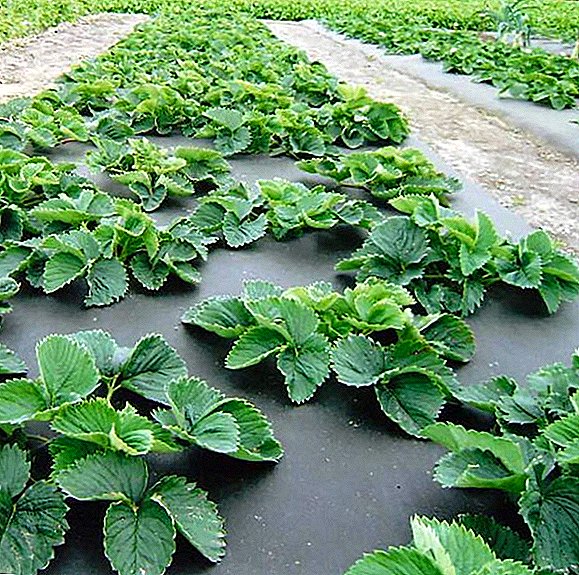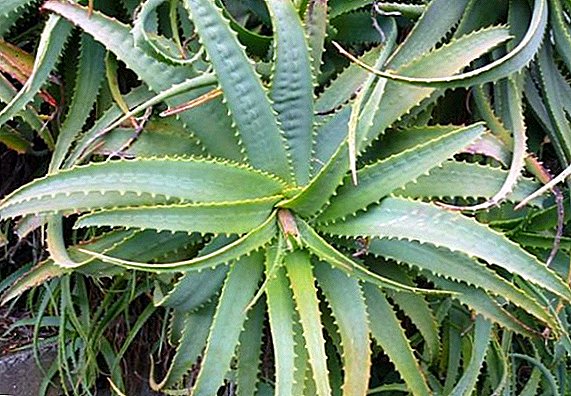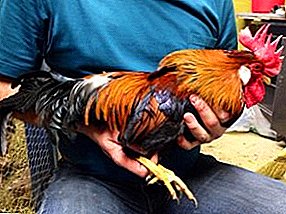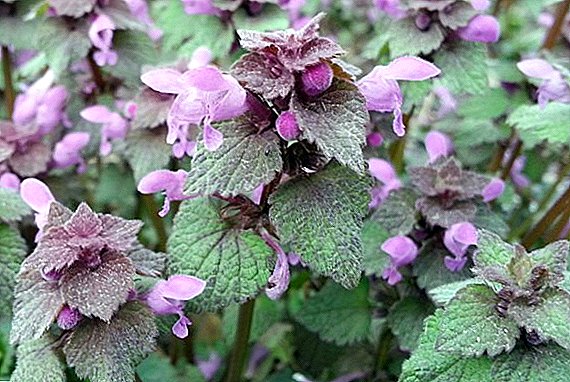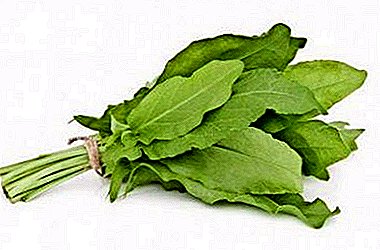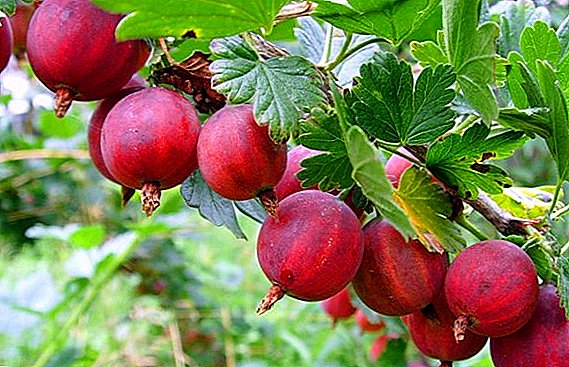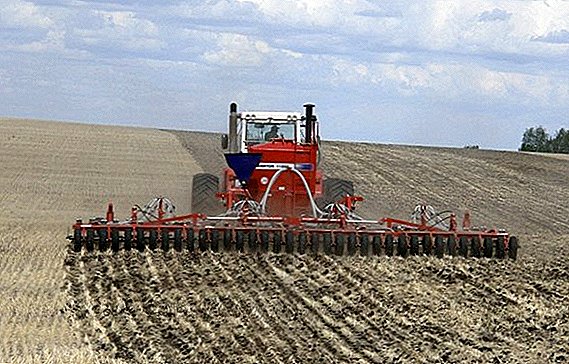
Cultivation of cultivated plants with the aim of obtaining a harvest involves the repetition of some processes aimed at improving performance, each year. Such processes include planting, various feeding, preparing plants and soil for wintering, plowing the land and many others. However, progress does not stand still, and modern engineers have developed many technologies and devices that can significantly facilitate these processes for the gardener. This article is devoted to the topic of plowing the land and various technological devices that facilitate this process.
Why do I need to plow the land
Despite the existing myth that plowing is not a mandatory process, and sometimes even harmful, we note that this is absolutely not the case. A plowed land is capable of producing a much more abundant crop, while plants that will be planted on such soil require much less careful care. 
For a better understanding of why it is necessary to plow, you should carefully examine the clod of earth you dug, in the fall. You will definitely find there a lot of weed roots and a large number of eggs of various insects and other pests. In the process of digging all these harmful inclusions are on the surface of the earth, where they lose their viability under the influence of low temperature.
Did you know? The first plow was invented in the 3rd millennium BC. er and looked like a frame into which a piece of wood was vertically embedded, dragged through the top layer of soil and loosened it.As a result of this event, the soil layer, which has already significantly depleted and to some extent lost its fertile properties, moves downwards, and the soil, saturated with useful elements and restored its natural properties, moves to the surface, where it readily awaits the moment of planting various plants in it.
Learn more about mulching, cultivation and harrowing the soil.
In the plowed soil, snow and thawed snow, which play a very important role in the restoration processes of the natural balance of trace elements in the soil, retain much better in spring. The plowed soil is better saturated with oxygen, which is one of the most important elements necessary for the normal growth and development of the plant.  The soil on which the plants were planted, is likely to be very densely trampled by the time it is possible to re-plant. In such a soil, the plants will germinate very poorly, not develop quickly enough and are unlikely to please you with a substantial yield. Plowing allows you to crush hard earthy clumps and thereby normalize the processes of plant growth.
The soil on which the plants were planted, is likely to be very densely trampled by the time it is possible to re-plant. In such a soil, the plants will germinate very poorly, not develop quickly enough and are unlikely to please you with a substantial yield. Plowing allows you to crush hard earthy clumps and thereby normalize the processes of plant growth.
How to plow
The traditional and still used method of processing small areas is manual plowing. The usual tool for this event is a bayonet spade. Recently, a significant number of various hand cultivators have appeared, which make it possible to ease this process and reduce the load on the back and shoulder girdle of a person engaged in tillage.
Did you know? The soil appeared as a result of the destruction of rock by the winds, which were then mixed with the remnants of the first plants that grew right in the rocks, this process took 1.5 billion years.For the treatment of large areas, the best method would be to use a tractor with a plow - this will not only significantly speed up the process, but also allow for the same depth of plowing throughout the field. However, for a gardener with his relatively small plot of land such a method would be too expensive and hardly very convenient.

Among the suitable for processing relatively small areas and at the same time, rather technological adaptations, it is worthwhile to single out tillers and cultivators. They cost considerably less tractors and perfectly replace a traditional shovel, while you are guaranteed to get an equally good result over the entire area that has been processed.
For cultivating small plots of land, gardeners actively use the Krot shovel and the Tornado hand-held cultivator.
However, in the event that the “virgin soil” is to be processed, the probability that even the best of the motoblocks can cope with it is very low. In this case, the most acceptable option in terms of price / quality parameters would be to use a mini-tractor. Their purchase and design are not particularly difficult in the conditions of the modern market, but repairs are often difficult, especially if you bought a mini-tractor of foreign production. 
Thus, the most acceptable way of plowing the land for a modern summer resident, who has a medium-sized plot, is processing with the help of a tiller or cultivator. Manual processing also deserves the right to life, but it is worth remembering the possible health risks that this method of tillage can cause, and the likely heterogeneous result (somewhere more deeply, somewhere less, etc.).
What is the difference between the tiller and cultivator
Many believe that the cultivator and the walker tractor are one and the same, but there are some differences between them. First, let's talk about their general features: both devices are used for tillage, loosening, preparing for planting plants, improving the structural features of the soil and for mixing soil with various fertilizers.
Familiarize yourself with the technical characteristics of the Neva MB 2, Salyut 100, Zubr JR-Q12E, Centaur 1081D motoblocks.
Now that distinguishes them:
- Motoblock allows you to perform a wider range of different agricultural work, for example, it can be used for planting potatoes or mowing grass, hilling and export crops from the site.
- The cultivator has a much weaker capacity compared to the walk-behind tractor, which is primarily due to the broader functionality of the latter.
- The motoblock can be combined with various other devices, as a result of which its functionality will significantly expand. For example, you can connect a pump, a circular saw, a plane or a trolley to it. In the cultivator, the only working tool are the cutters that are immersed in the soil.

Important! If we consider these devices only in the context of plowing the land, then the cultivator will be a far better choice. This is due to the weight of the cultivator, which is lower compared to the motoblock, which means that the time required for plowing the cultivator, as well as the amount of effort, is reduced.
How to get started?
When buying a walker for yourself, remember that this purchase is not made for one season, and you have to carry out with it a large amount of work every year. So try to make sure that this unit will be convenient for you to use. Fatigue when working with this device comes pretty quickly, and if the process is accompanied by a pronounced inconvenience, then the efficiency of your work will be extremely low.
Learn how to dig the ground with a walking tractor.
After purchasing the unit, it is necessary to assemble it in order to bring it into working condition by installing two additional devices on it - the plow itself and the lugs. Without these components, the plowing process will not be possible, so ask in advance if these mechanisms are included in the kit for your model of motoblock.
Further, the motor-cultivator should be properly adjusted, taking into account three parameters: the width and depth of plowing, as well as the plow angle. After that, it is necessary to mark the territory with the help of any materials: pegs, twine, twine, wire, etc. This will help to fix the direction and depth of the work. The first furrow should not be deeper than 10 cm; subsequent ones can be deepened up to 20 cm. 
How to facilitate the process?
In order not to have to pull out the stuck tiller from the soil to the top and not lose precious time and physical strength, install a support wheel on it. Its purpose is to prevent full immersion of the motoblock in the soil. In addition, with the same purpose it is best to cultivate the land in dry weather, preferably not earlier than 3 days after the rain.
It is extremely important, conducting similar work every year, to change the direction of movement, because, whether we like it or not, the soil layer is in constant motion, which is further facilitated by our movements on the site. His shifts lead to a distortion of the relief, which later has a bad effect on subsequent plowing, making it difficult. If you reduce the motion vector and constantly change its direction, you can significantly slow down this process.
Familiarize yourself with the MT3-892, MT3-1221, Kirovets K-700, Kirovets K-9000, T-170, MT3-80, Vladimirets T-30, MT3 320, MT3 82 tractors, which can also be used for different types of work.
To have as little as possible to turn the tiller in the opposite direction, when you reach the end of the furrow, it is recommended to plow along the long side of your plot. So you can minimize the number of unnecessary movements, save physical strength and all the time you will only move in a straight line.
Important! Turning the steering column of the motoblock to the left, you will be able to plow much faster, as you will be moving on the land that has not yet been cultivated. In addition, such a manipulation will further avoid the sticking of the aggregate in the soil.
At last
Each walker has several speeds of operation, designed so that each user can individually select for themselves the appropriate speed. Therefore, if you suddenly see that, for example, rain is gathering, and you have not finished plowing, you can use a speed increase to complete the process more quickly. 
If it seems to you that the soil is too hard and the cultivator goes through it with great difficulty, try to reduce the depth and width of plowing and carry out the procedure in two stages. In this case, make the second run with the normal parameters of the depth and width of the furrow. This will break the compacted earth lumps, and ultimately you will spend much less time on the whole process than if you continued to do everything the same way as originally.
To prevent damage to the plow, carefully examine the area for large stones, glass, bricks or metal objects before plowing. With the same purpose, try not to move the tiller too hurriedly forward along the furrow, because a damaged plow can sometimes not be repaired, and buying a new one very often costs quite a lot.
Remember that to get a good harvest, plowing is one of the key processes that provide the soil with all the necessary nutrients and cleans it from various weeds and pests. Do not believe in the myths that tilling the land does not play any role in the growth and development of plants, properly care for your garden, and autumn will surely please you with a bountiful and tasty harvest.


